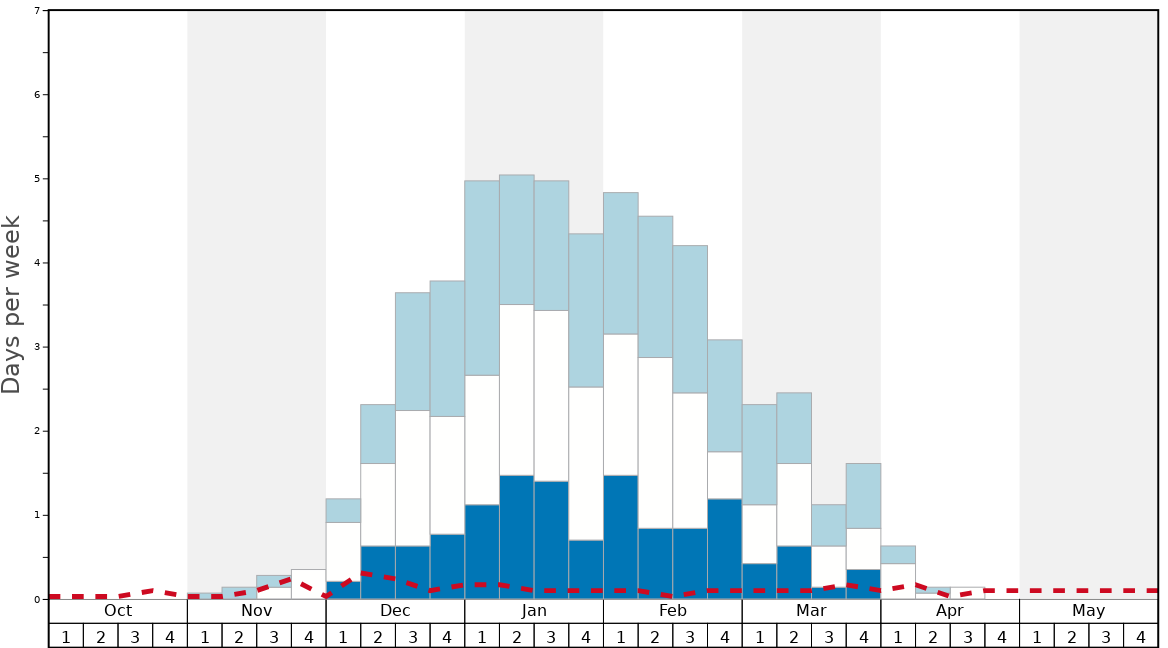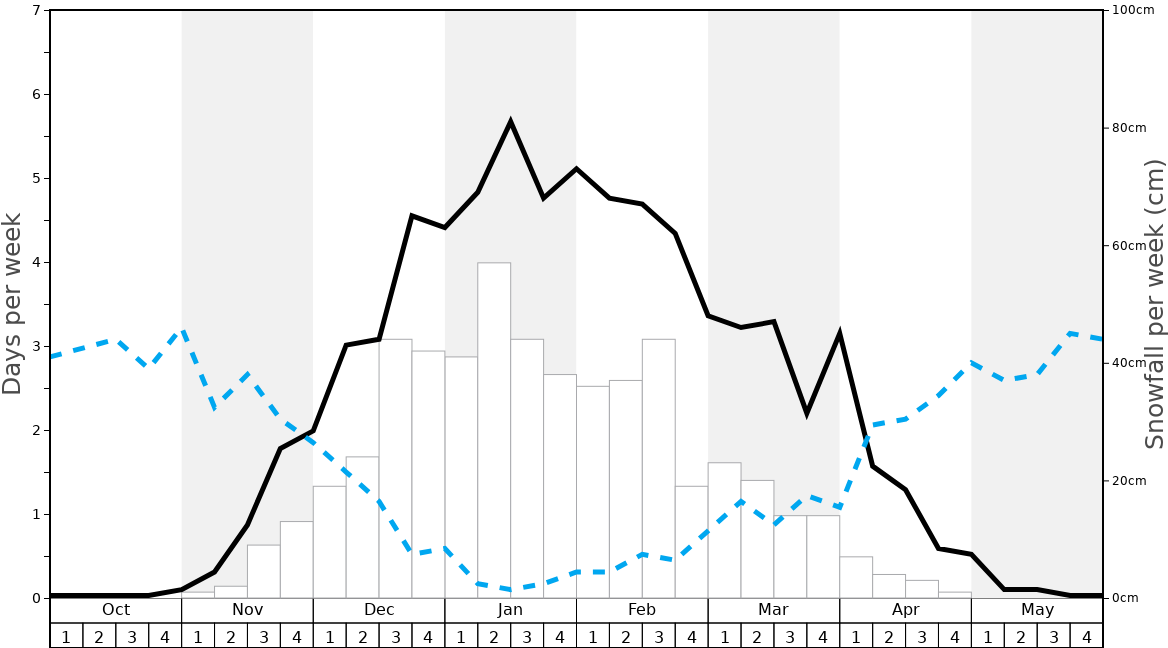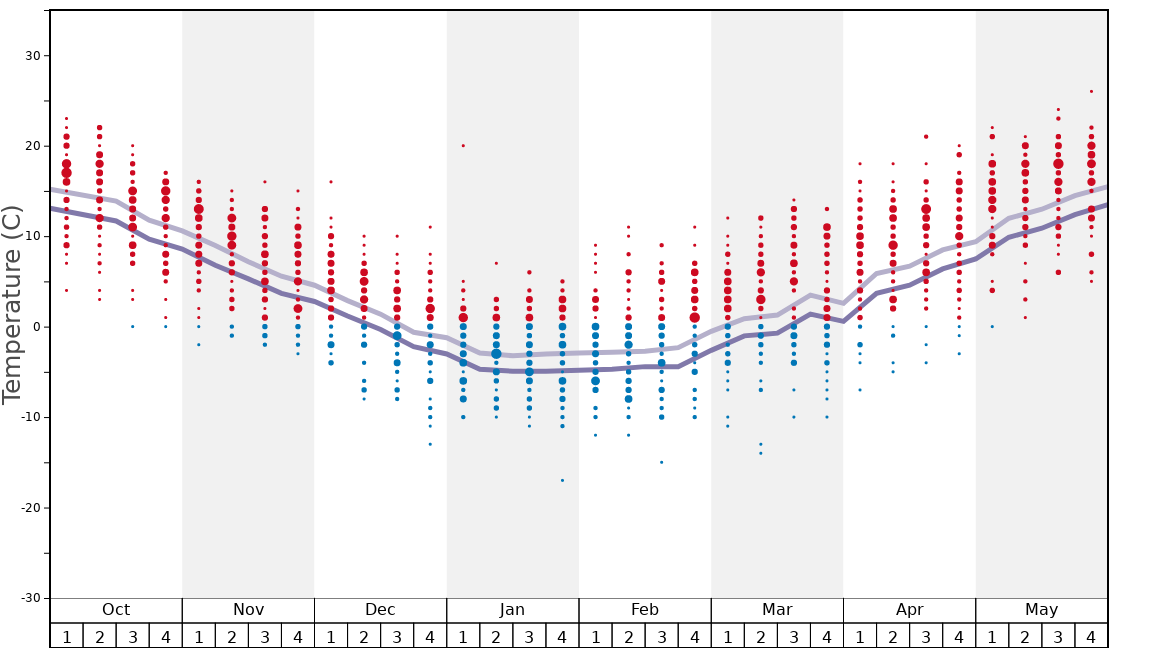Snow History: Compare Resorts
Sun Alpina Keikyu Aokiko Snow Depths
Recorded snow depths for the upper and lower slopes in Sun Alpina Keikyu Aokiko and (2007 – 2024).
The most cherished days on the mountain in Sun Alpina Keikyu Aokiko are Bluebird Powder days when it is mostly sunny with light winds following very recent snowfall. Poorer weather conditions may prevail on Powder days when the visibility can be limited but the snow is significantly deep and fresh for keen powder-hounds. Bluebird days can suit many skiers that aren’t necessarily hunting powder but want to enjoy the snowy mountains in sunnier conditions and light winds. Read More
The snowiest weeks of the year in Sun Alpina Keikyu Aokiko are shown but also bear in mind the number of days that it typically snows each week if you want regular fresh tracks. The risk of a rainy day is shown but be sure to switch between elevations to see if lower lifts are rain affected or higher lifts remain snowy despite any rain further down the mountain. Read More
The highest and lowest temperatures averaged for each week of the year in Sun Alpina Keikyu Aokiko are shown. Check out the risk of freze-thaw conditions prevailing at different elevations for any given week. We also show the extremes of temperature (blue/red dots) that reveal the chance of unusually warm or cold conditions.



